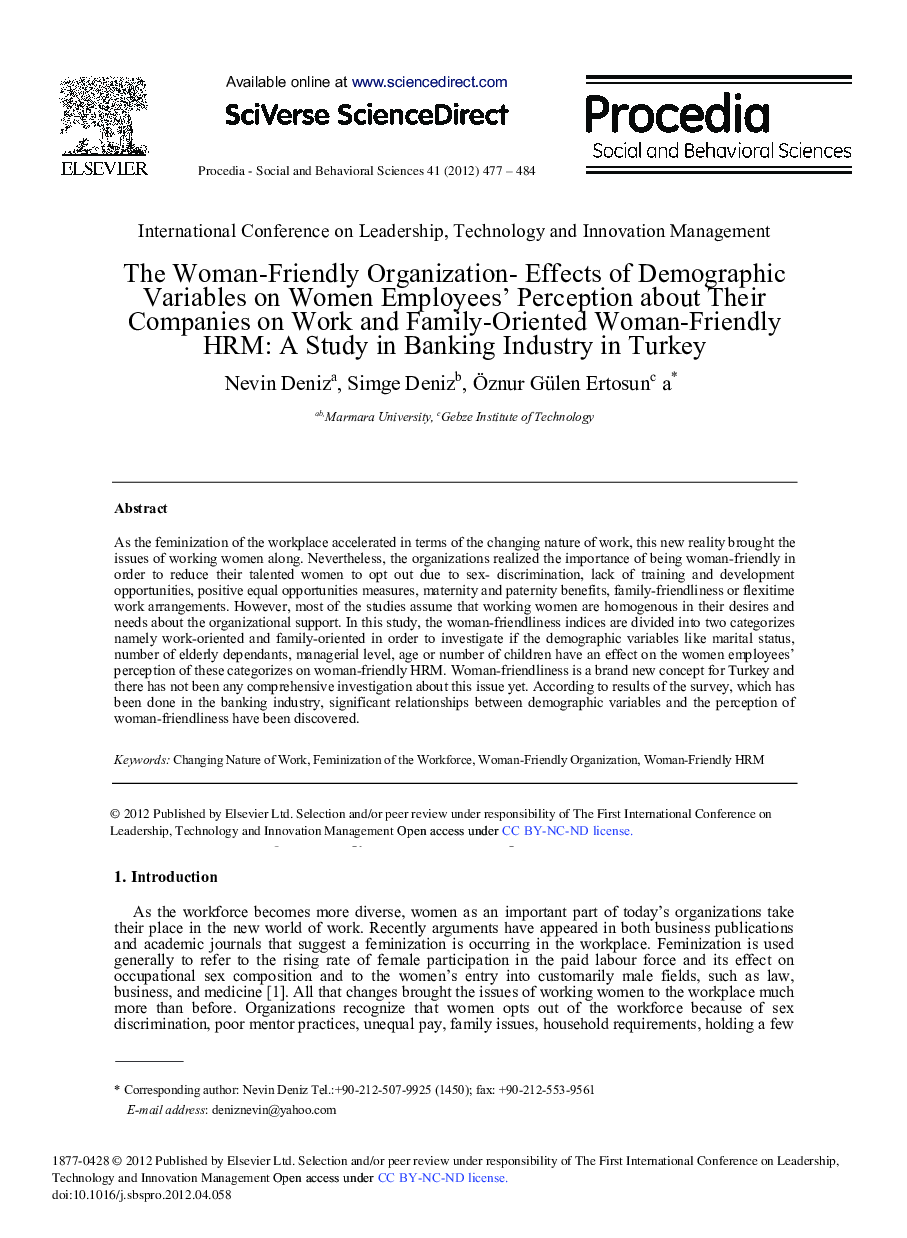| کد مقاله | کد نشریه | سال انتشار | مقاله انگلیسی | نسخه تمام متن |
|---|---|---|---|---|
| 1122500 | 1488518 | 2012 | 8 صفحه PDF | دانلود رایگان |

As the feminization of the workplace accelerated in terms of the changing nature of work, this new reality brought the issues of working women along. Nevertheless, the organizations realized the importance of being woman-friendly in order to reduce their talented women to opt out due to sex- discrimination, lack of training and development opportunities, positive equal opportunities measures, maternity and paternity benefits, family-friendliness or flexitime work arrangements. However, most of the studies assume that working women are homogenous in their desires and needs about the organizational support. In this study, the woman-friendliness indices are divided into two categorizes namely work-oriented and family-oriented in order to investigate if the demographic variables like marital status, number of elderly dependants, managerial level, age or number of children have an effect on the women employees’ perception of these categorizes on woman-friendly HRM. Woman-friendliness is a brand new concept for Turkey and there has not been any comprehensive investigation about this issue yet. According to results of the survey, which has been done in the banking industry, significant relationships between demographic variables and the perception of woman-friendliness have been discovered.
Journal: Procedia - Social and Behavioral Sciences - Volume 41, 2012, Pages 477-484